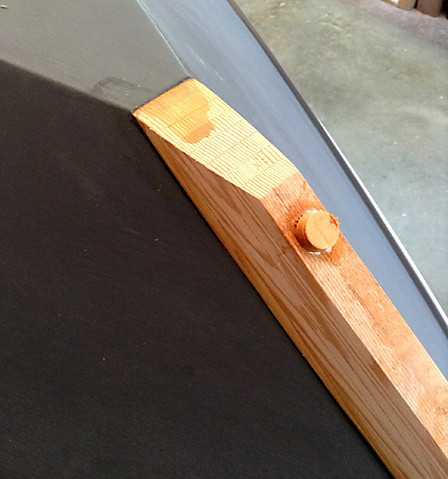After sanding, filling, sanding and more sanding the hull is ready to be painted. The transom and the top edge of the sheerstrake, where the outer gunwale will be attached, are masked off. Two coats of primer are applied with roller and brush, white for the sheerstrake and dark grey for the rest.
One last job before turning the boat over is to attach the outer stem. The width of the forward face and the aft side of the stem, where it meets the planking, are scribed. The stem can then be tapered on the bench before being glued, screwed and plugged.





